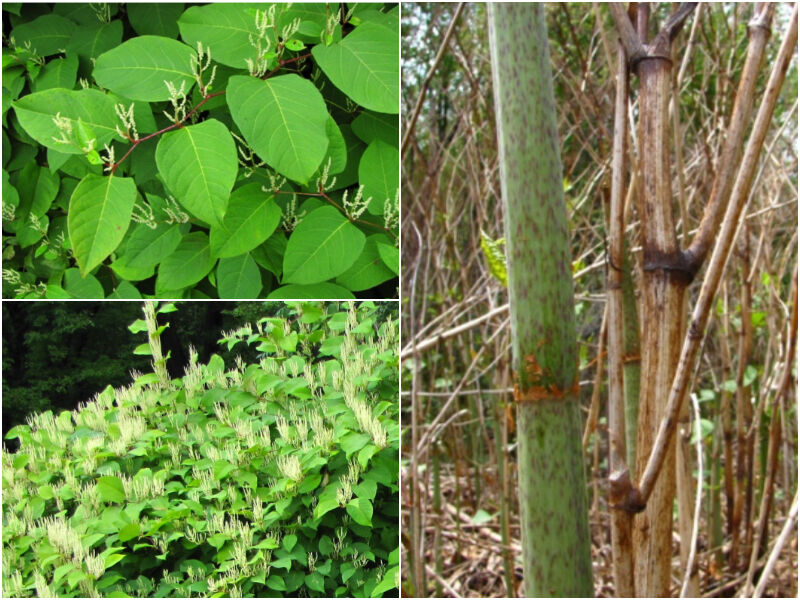Identification
- Large, heart-shaped leaves.
- Thick, jointed stems resembling bamboo.
- Spikes of white flowers in late summer.
- Grows in dense patches near water or upland, in lawns.
Why is it bad?
- Japanese knotweed can grow through porous surfaces, damaging foundations.
- Japanese knotweed reduces biodiversity of plants, and as a result, wildlife.
- Of particular concern is its tendency to invade valuable wetland habitat and line the banks of creeks and rivers where it often forms an impenetrable wall of stems, leaving banks vulnerable to erosion when it dies in winter.
How to get rid of it?
- Attempting to remove Japanese knotweed by pulling or digging is generally ineffective due to its extensive underground connected root system. It may even promote further spreading if pieces of the plant are not disposed of properly. Burn cut dry stalks on site, if possible.
- Repeated herbicide application has been effective. Near water, use water-friendly herbicides with a 50% concentration of glyphosate (ex: Habitat, Rodeo)
- In upland areas use .5oz of Milestone per gallon of water add a tablespoon surfactant.
- Spring (April-May) spray 6-12” emerging seedlings. Mow or use brush hog to keep it around 2-3 feet and re-spray in June/July. Put cut stalks in a pile to burn when dry. The taller it gets, the harder it is to spray.
- Spraying not recommended if a very tall stand. Cut it in the spring and follow directions above.
Questions? Contact Lisa Burns at 715-468-4654 lburns@co.washburn.wi.us
Last Update: Sep 01, 2023 12:50 pm CDT

















